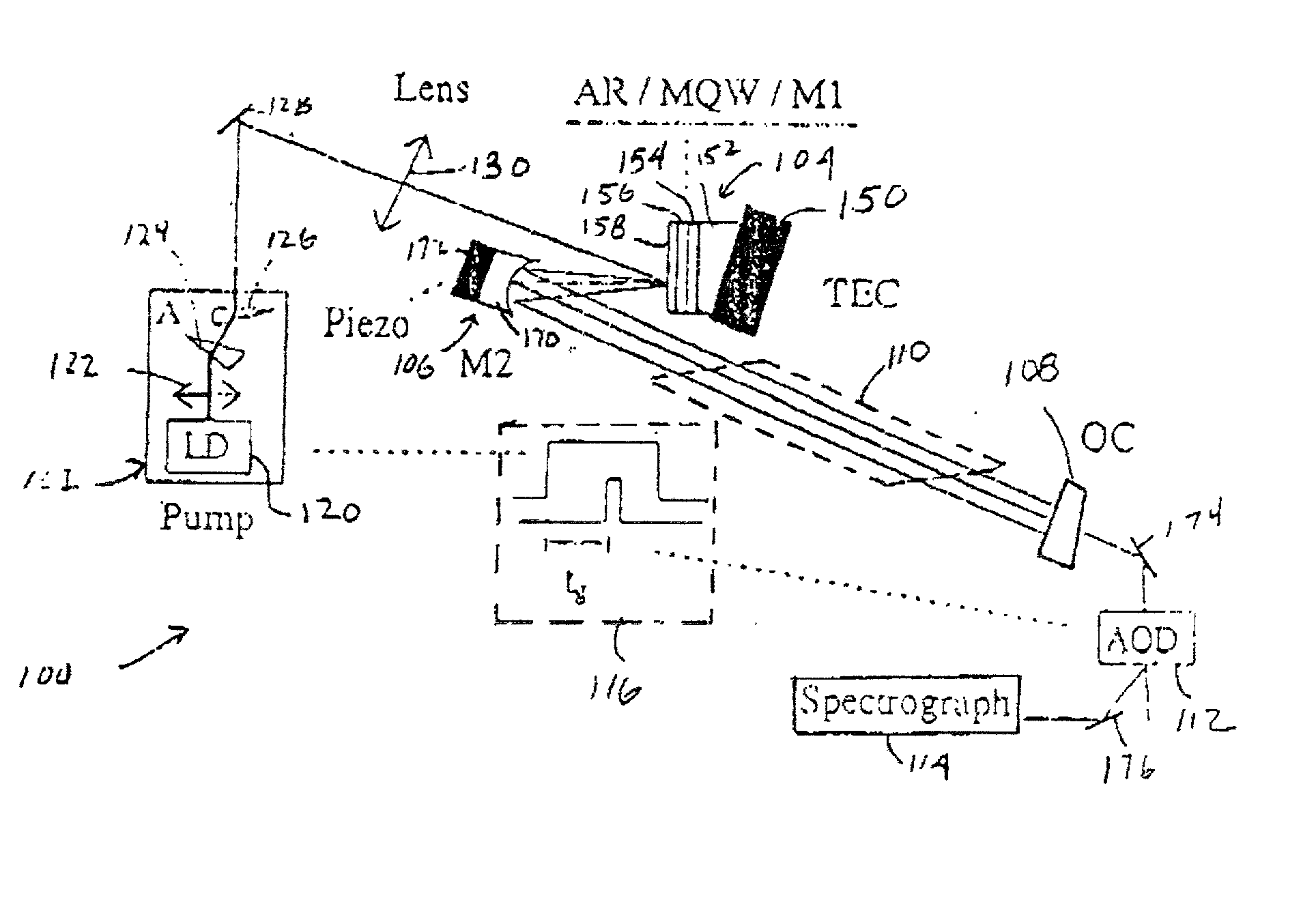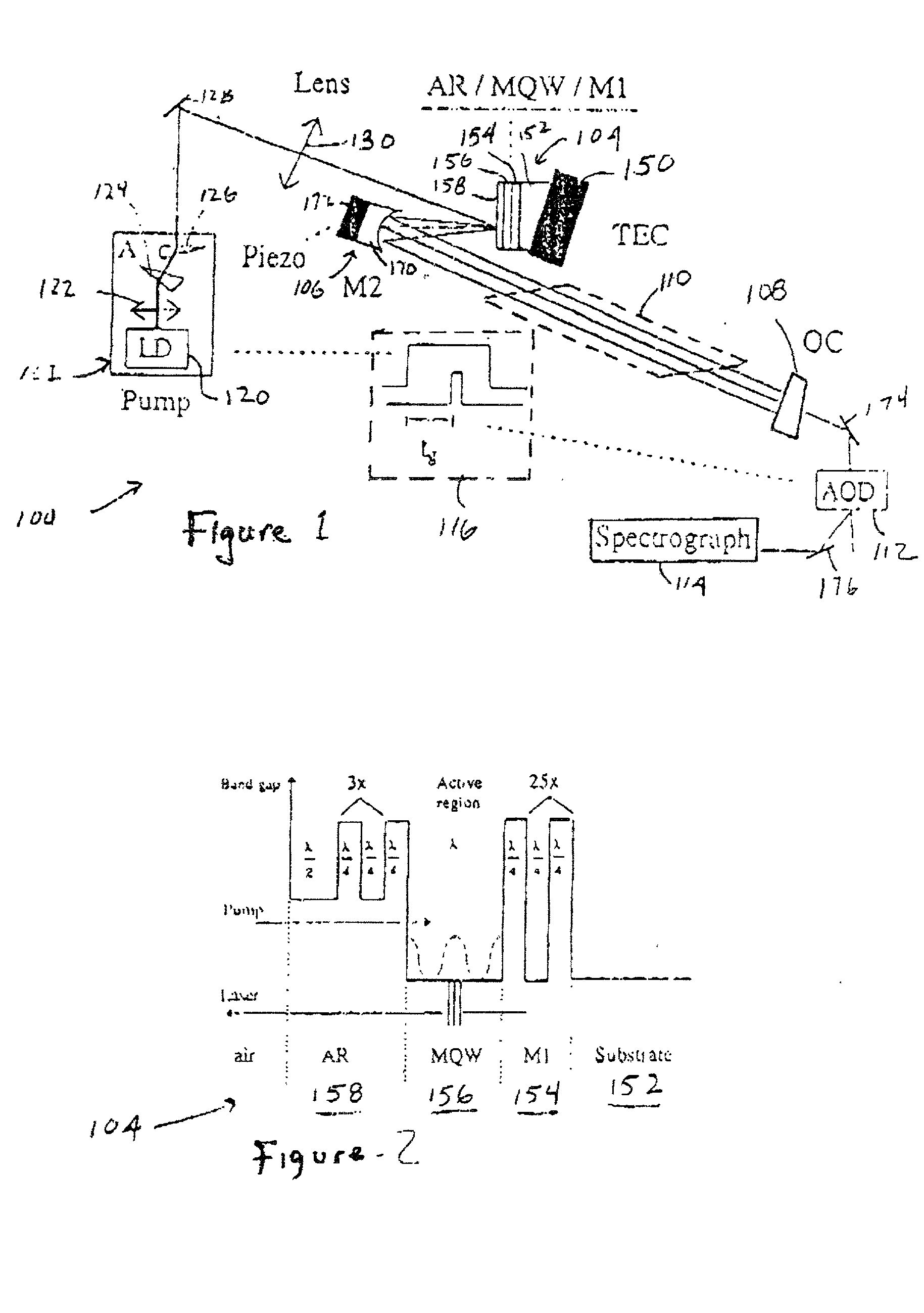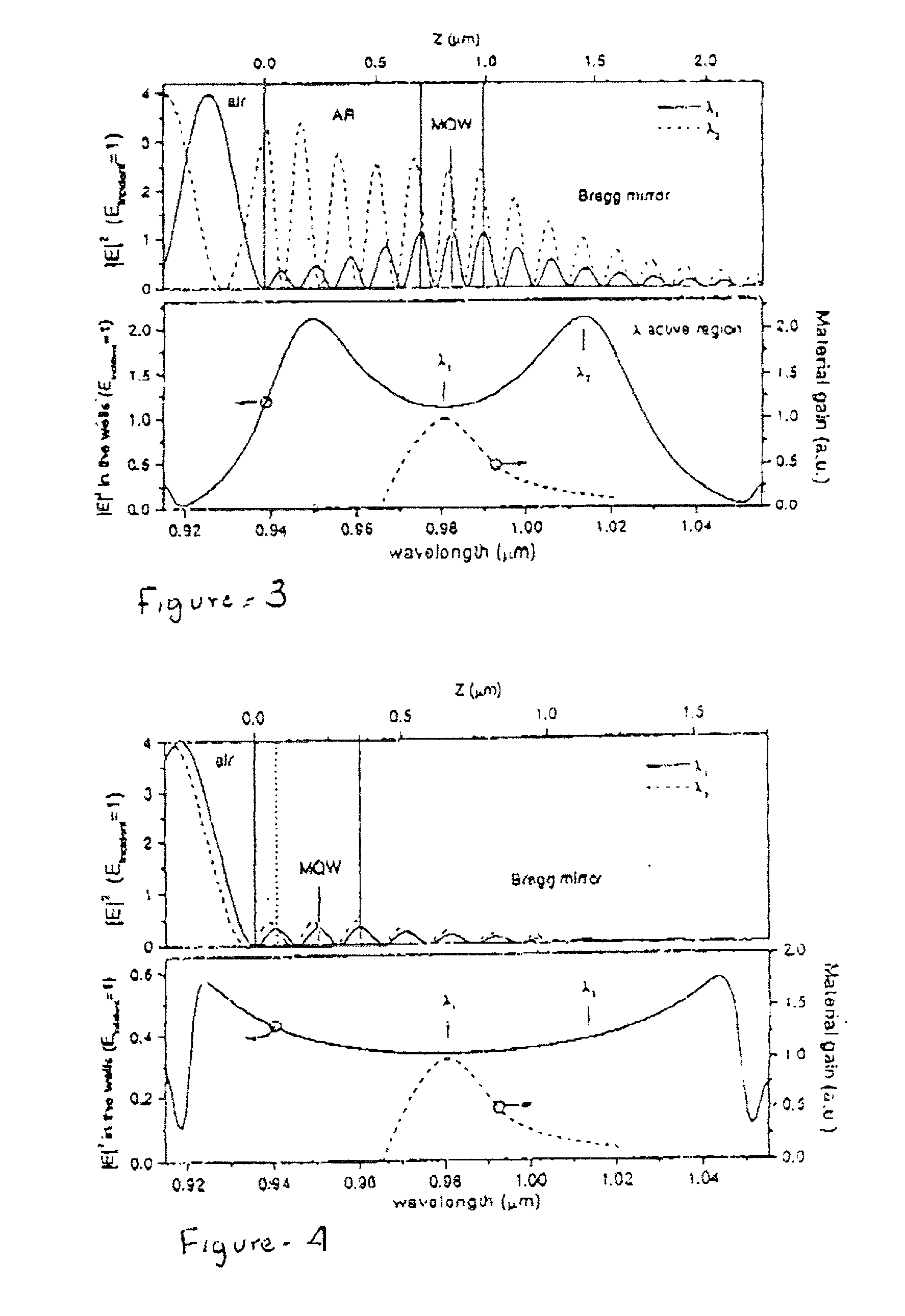Surface-emitting semiconductor laser
a semiconductor laser and surface-emitting technology, applied in semiconductor lasers, laser details, laser optical resonator construction, etc., can solve problems such as hysteresis of diode lasers, uncontrollable mode hopping, and tensile mode hopping
- Summary
- Abstract
- Description
- Claims
- Application Information
AI Technical Summary
Benefits of technology
Problems solved by technology
Method used
Image
Examples
example two
VECSEL for CRDS
[0098] After about three seconds the initial broadband spectrum of the FIG. 2 VECSEL collapses into a narrow line only 13 mode wide. Further, the narrowing continues until a single longitudinal mode is produced after approximately 500 seconds. The time constant of the narrowing will be dependent upon the initial width of the laser radiation divided by the bandwidth of the gain which is generation time multiplied by the loss rate inside the cavity (inverse of photon life). If the cavity finesse is very high, it means that the loss rate will be very low. Figure ii illustrates single mode operation of VECSEL as a function of optical mode. It is possible to tune the frequency output of the laser in a range from 1020 to 1060 nm simply by translation of the semiconductor structure relative to the pump radiation, as previously noted. A mode-hop-free tuning range of about 30 GHz has been achieved by simultaneous translation of the output coupler (with a piezoelectric transduc...
example three
VECSEL for Optical Fiber Telecommunications System
[0102] FIG. 11 presents two plots of VECSEL active gain as a function of wavelength and pumping intensity, and marks a series of VECSEL cavity modes (resonances) across the abscissa of the graph. The dotted line shows initial intensity buildup in the cavity which takes place during the initial startup (and which is of particular interest and importance in the ICLAS example given above). After about one microsecond VECSEL active gain becomes clamped to the average cavity losses, and from the solid-line curve of FIG. 11 it is seen that only the mode closest to the gain maximum will be lasing. Thermally controlled VECSEL mode hopping and stability at each selected mode (following startup phase) as a function of time is shown in the FIG. 12 graph.
[0103] By appropriate design, each mode may be made to coincide with an optical telecommunications channel in a fiber channel network, and by thermally controlling the VECSEL active region, a pa...
PUM
 Login to View More
Login to View More Abstract
Description
Claims
Application Information
 Login to View More
Login to View More - R&D
- Intellectual Property
- Life Sciences
- Materials
- Tech Scout
- Unparalleled Data Quality
- Higher Quality Content
- 60% Fewer Hallucinations
Browse by: Latest US Patents, China's latest patents, Technical Efficacy Thesaurus, Application Domain, Technology Topic, Popular Technical Reports.
© 2025 PatSnap. All rights reserved.Legal|Privacy policy|Modern Slavery Act Transparency Statement|Sitemap|About US| Contact US: help@patsnap.com



